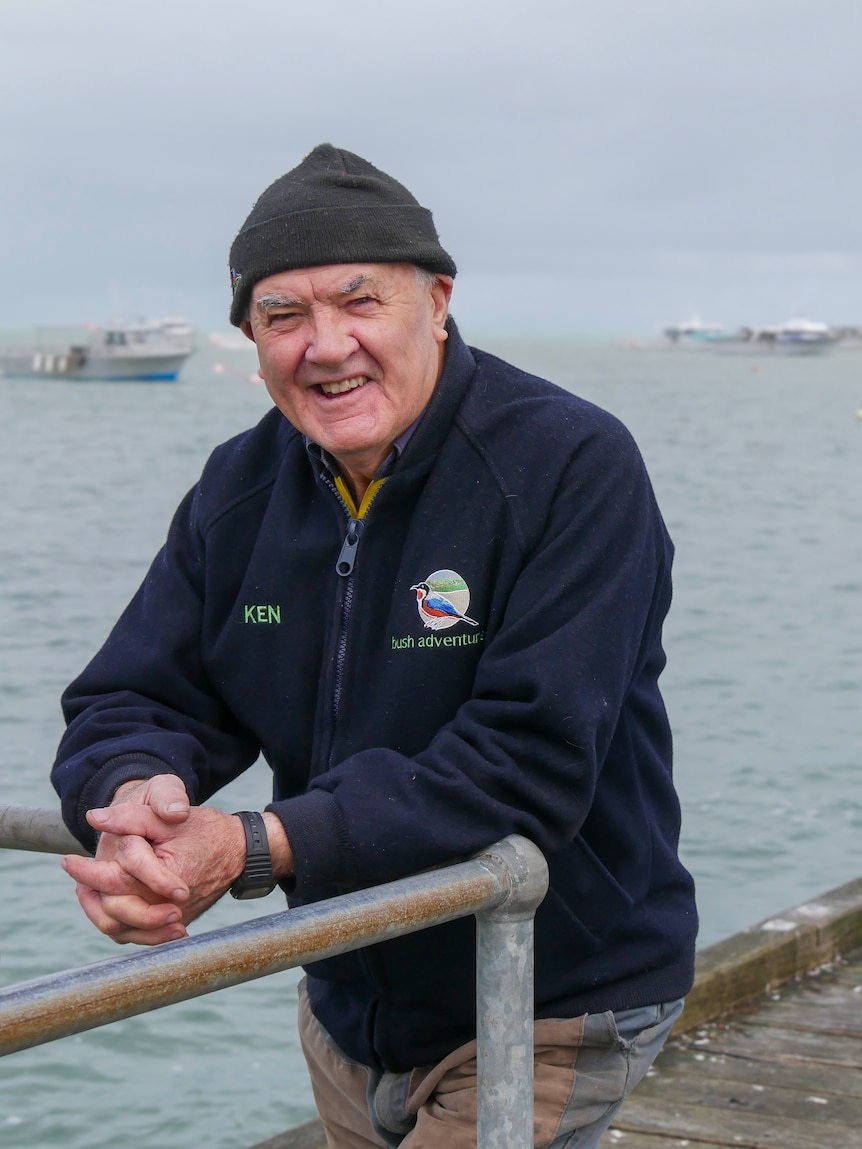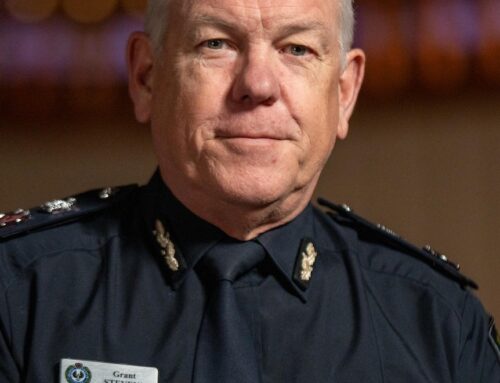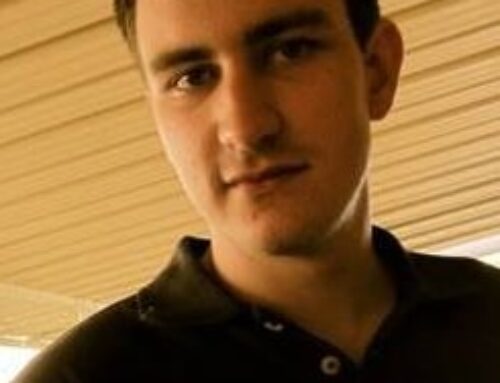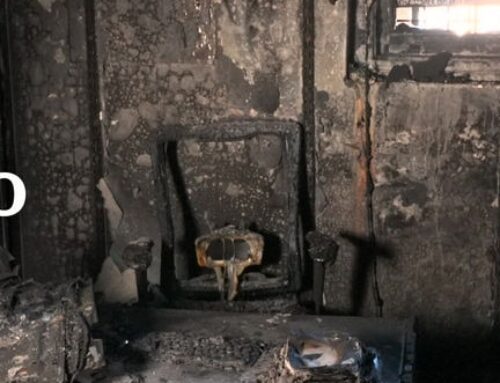Uncle Ken Jones’ ancestors have passed down stories about some of the most significant natural events in Australia’s history.
A Boandik man, Uncle Ken has now taken on the job of sharing these stories with the next generation.
Based in Port MacDonnell, also known as Ngaranga, Uncle Ken lives close to two important sites in Boandik culture.
First, there is the sea and coast, where Boandik people have lived, fished and hunted for an estimated 30,000 years.
Where the Port MacDonnell Southern Rock Lobster fishing fleet docks was once wooded grassland and a popular hunting spot for Boandik people. (ABC South East SA: Bec Whetham)
Further inland, there are dormant volcanoes, thought to be the site of mainland Australia’s most recent volcanic eruptions.
Uncle Ken said these stories provide important lessons and show how long Aboriginal people have inhabited this country.
“It’s very important that we celebrate that culture and heritage and we continue the legacy of these stories,” he said.
“Without realising it, these stories have been around for thousands of years.”
An encroaching ocean
Port MacDonnell is well known as Australia’s Southern Rock Lobster fishing capital, housing the country’s largest fleet of lobster fishing boats.
The rugged coastline didn’t always look like this though, with the shore once kilometres further out to sea.
It was a gradual change that the Boandik people witnessed across hundreds of years, as what were once hunting grounds, became part of the sea floor.
Uncle Ken said a story told by generations of Boandik people describes how a group of women went foraging in a green forest of gum trees, but didn’t ask permission of a giant old man who was keeping watch over the land.
He said the giant then sat down, unhappy with the women, and called the sea in, creating the modern coastline.
“When I first heard that story from friends and family, I sort of doubted how true it could be,” Uncle Ken said.
“It turns out, there’s 16 or 17 similar stories around Australia about the sea level rise.
The Southern Rock Lobster industry has come to define Port MacDonnell. (ABC South East SA: Eugene Boisvert)
“This particular story is about 12,000 years old. It’s very interesting this story could be repeated from generation to generation with absolute importance, that what we understand what is our sea country now, was once open woodland and hunting grounds.”
As part of the story, land-based animals scurried to get to dry land, but some didn’t make it, including the echidna, which became the crayfish the town is known for.
The story of how the coast came to be offers a glimpse into the way the Boandik people saw their changing environment.
University of Sydney Associate Professor Andrew Short said Port MacDonnell and the surrounding area is one of the best-preserved examples of coastal change in the world.
“It would’ve been a continuing period of adaption for Aboriginal people from a period of about 18,000 to 6,000 years ago,” he said.
“This change was continuing all the while and still to a very slow degree today.”
University of Sydney Professor Andrew Short is one of Australia’s leading experts on coastal changes. (Supplied: Professor Andrew Short)
An explosive rumbling
Further inland, Mount Schank, known as Pareen to the Boandik people, is a dormant volcano which is part of the Newer Volcanic Province and includes nearby Berrin (Mount Gambier).
It’s thought to be the site of Australia’s most recent volcanic eruptions, around 5,000 years ago.
The relative recency of the eruptions means the Boandik people were there to see them first hand.
Pareen (Mount Schank) near Port MacDonnell was once a fiery volcano, but is now a tough hike for local walkers. (ABC South East SA: Bec Whetham)
Uncle Ken said stories passed down describe how his ancestors could sense the eruptions and left for their own safety.
The groups originally living around Belleta (Mount Muirhead), near Millicent, made use of their surroundings next to the volcano, cooking food on hot rocks and sleeping on the warm sand.
One day, they could feel the ground shaking and saw it as a sign from a mythical creature, the bunyip, that something bad was on the way.
They picked up and moved to Pareen, where the same rumblings were felt again, so they left to move closer to the coast.
As they left for Berrin, they watched the volcano erupt.
Volcano expert Dr Heather Handley at Pareen (Mount Schank). (Supplied: Heather Handley)
Volcano expert Professor Heather Handley said this story links closely with what researchers understand about eruptions at all three volcanoes.
“The Aboriginal oral traditions of the volcanic eruptions are really important for advancing scientific understanding of the eruptions and what the impact was on the environment at the time,” she said.
“For Berrin and Pareen, these Boandik traditions are really important because at the moment the scientific dating of those two volcanoes, it can tell us they erupted around 5,000 years ago, but it can’t tell us the order.
“What the Boandik tradition does is give us is an indication of which volcano erupted before the other one.”
Uncle Ken Jones said he wants younger generations to understand the connection between people and the land they live on. (ABC South East SA: Sam Bradbrook )
While it’s been thousands of years since Australia’s modern coastline was formed and Australia’s youngest volcanoes erupted, Uncle Ken said keeping these stories alive helped connect Boandik people with their environment.
“It’s funny these stories, they don’t have the constricted time scale that we do,” he said.
“When these stories happen they could happen over hundreds of years or several generations.
“But I think it illustrates the fact that the stories encompass the spirit and the respect of the country.”
Stream Back Roads free on ABC iview or watch Tuesdays 8pm on ABC TV.




